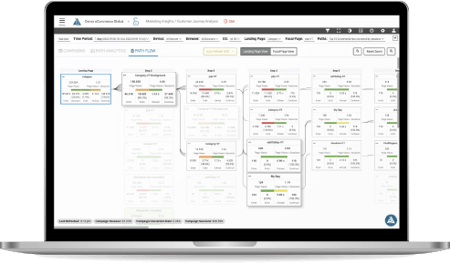Teams worldwide are challenged to do more with less. Despite rampant budget cuts, resource constraints, massive layoffs, and more, the pressure is cranked up to generate even greater profits and cash flow.
So, whether we're headed into an economic downturn or strapped in for a "soft landing," now is the time to prioritize investments for long-term success. Although the budget ax is swinging, spending on digital technologies for better employee experiences has actually increased.
Why?
Here's one reason. By 2027, Gartner predicts organizations that promote employee digital dexterity will have stronger revenue year over year.
Dennis Perpetua, Global CTO and CXO of Digital Workplace Services at Kyndryl, shares this sentiment, saying on a recent episode of The Frictionless Experience:
"If you look at, for example, experience management platforms or experience management services, the compounded annual growth rate of that is very high, in the 20% over the next 10 years. It's in the hundreds of billions of dollars over the next 10 years."
Commenting on the benefit of investing in the employee experience, Dennis adds:
"It's not just that we want to make things smooth, we do, but there's the intention of improving the employee experience, allowing folks to be more productive, to attract and retain talent, but also to drive those outcomes for our customers."
 Moving from Return on Investment (ROI) to Return on Employee (ROE)
Moving from Return on Investment (ROI) to Return on Employee (ROE)
Understanding the employee's journey as they access HR systems and internal applications is critical to improving the employee experience.
Knowing how employees interact with internal systems helps CIOs decommission resources that are not used anymore, saving time, money, and resources. This efficiency improvement allows IT teams to focus only on what employees need by reducing the noise of everything they currently look through to find what they need to do their job.
CIOs and the Employee Experience
Unsurprisingly, employee experience is a top priority for the Human Resources (HR) department or HR leaders like Chief Human Resources Officers (CHROs).
But what does it have to do with Chief Information Officers (CIOs)?
Well, think about all the technology and digital touchpoints employees rely on daily. CIOs are responsible for delivering all of it, including the right tools, policies, and procedures.
Today, the workplace is scattered across the home, the office, and anywhere in the world with a Wi-Fi connection. Even as I'm writing this, it's from my back porch and depend on IT and Service Management to make it happen.
The role of IT is changing to make employees and end-users more productive versus simply keeping the network running in a company's headquarters. Since cloud platforms have moved many administrative tasks away from IT departments, it's allowed IT folks to prioritize improving the employee experience and creating business value.
What is Employee Digital Dexterity?
Digital dexterity is the ability of an organization or employee to pivot quickly using digital tools, which, as we saw during the pandemic and beyond, determined the success or failure of many companies. It changed how consumers transact, brands compete, and work gets done.
According to Gartner, up to 81% of the eligible workforce will be hybrid or remote in the future. Whether in-office, fully remote, or hybrid, businesses need a dynamic and engaged workforce to operate efficiently.
When individuals and organizations are digitally dexterous, they're 3x more likely to launch, complete, and succeed in digital initiatives. And employees also want to build their digital skills for personal success, believing it'll positively impact their work effectiveness and career advancement.
Removing Friction to Power Digital Dexterity
A maze of workplace tools, inflexible and outdated technology, extraneous new-employee onboarding, and constantly being forced to switch between disparate internal applications are points of friction that can drain employee productivity, collaboration, and satisfaction.
As a result, 50% of employees, faced with a mountain of ever-increasing tasks, struggle to find the information, data, and resources they need to do their job. Instead, they lose 2+ hours each day looking for support, toggling 1,100 times between 36 apps on average to do their work throughout the day.
It's demotivating for employees and decreases productivity by 40%. It's also expensive for the organization to spend potentially millions of dollars on mission-critical apps that don't deliver better employee experiences or prove business value and instead contribute to poor employee experience and turnover.
Humanizing the Employee Experience
CIOs and the C-suite must emphasize putting people first. After all, no single department alone is responsible for the employee’s experience.
For example, IT leaders should work with HR to regularly look for places where they can simplify business processes, like digital employee onboarding. HR must deliver certain forms and paperwork to new and existing employees, which should not be daunting. On the other hand, IT needs to ensure seamless deliverability and access for all parties.
3 Steps to Transform Your IT Culture to Be Employee-Centric
-
Continually measure every employee's experience and quantify the impact of digital friction on KPIs like employee productivity and support ticket volume.
-
Talk about the ugly babies. Transparency of the results, good and bad, allows you to go from finger-pointing to pinpointing the root cause of friction in the employee digital journey.
-
Prioritize solutions that maximize employee satisfaction and productivity, such as gaining consensus with partners and vendors to set Experience Level Agreements (XLAs)instead of Service Level Agreements (SLAs).
Although teams are being challenged to do more with less, they should not lose focus on employee experience. By investing in digital tools and removing friction in the employee journey, CIOs can transform an organization’s culture to create a digitally dexterous workforce and drive real business value.
Additional Reading
.png)
During the holiday rush, every shopper matters
Optimize the customer journey before the eCommerce event of the year.

.jpg)

